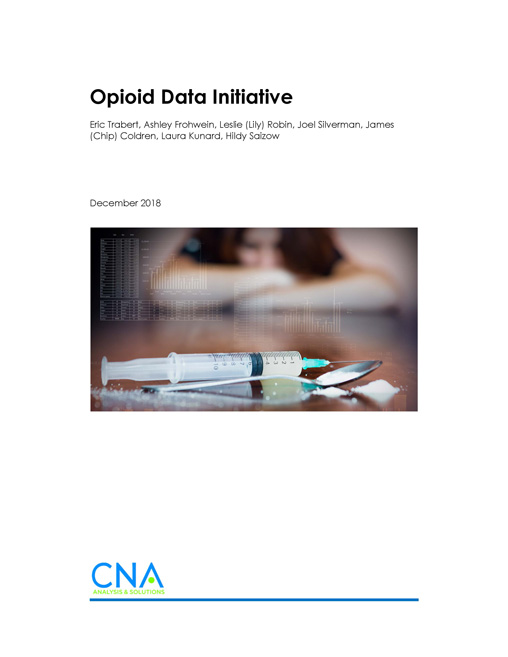Substance use disorders, especially those involving the misuse of opioids, represent a major public health and public safety crisis for communities across the U.S. In 2016, roughly two-thirds of people (over 42,000) who died of drug overdoses in the U.S. had opioids in their system. Increased use of highly potent synthetic opioids, such as fentanyl, has fueled the steady rise in overdose rates since 2013. States and local communities are using data-driven approaches to better understand the size and scope of the epidemic, identify populations at risk, and improve the effectiveness and efficiency of their response efforts. Working with nearly a dozen jurisdictions around the country, we examined the role that data plays in formulating policy, guiding operational practice, and evaluating progress achieved in fighting the epidemic. We also examined the extent to which opioid-related data is shared among diverse stakeholders in local jurisdictions, the barriers or challenges to sharing data, and promising practices to overcome these challenges.
We found that in most jurisdictions, stakeholders use data to inform much of what they know about this crisis and the actions they take to respond. This is done at the agency or organizational level as well as the community level. To support the latter, all communities we worked with have established multidisciplinary partnerships to bring together diverse perspectives and expertise, leverage resources, and facilitate data sharing. These partnerships have been instrumental in raising awareness about the epidemic and spurring creative and evidence-guided interventions.
We also found that much of the data or information that is currently shared among stakeholders is in the form of aggregated data resulting from internal analyses that individual agencies or organizations perform. The biggest barrier to sharing data, especially non-aggregate data, is concern about legal protections on health-related data and the protection of patient confidentiality. Other key barriers to using data more effectively include concerns over the accuracy and timeliness of data, resource constraints, and the lack of available tools or software to support data integration.
The jurisdictions we worked with uniformly recognize the value in using data to help them operate in a more informed, effective, and efficient manner. In many instances, data is used not only to guide discussions about opioid addiction, but also to inform decision-making. Most jurisdictions also recognize that more can be done in terms of better integrating data into a continuous process of evaluation to ensure that opioid response policies and operations are achieving their desired outcomes.
Download reportDetails
- Pages: 47
- Document Number:
- Publication Date: 12/1/2018
